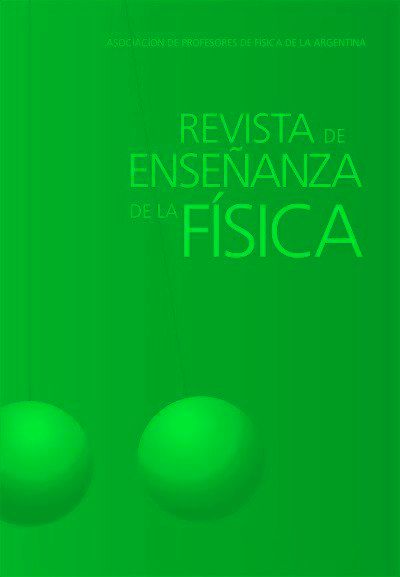Exploring physical concepts on semiconductors by means of comics design
DOI:
https://doi.org/10.55767/2451.6007.v33.n2.35317Keywords:
Comics, Semiconductors, Multimodal and multiple representationsAbstract
In this article we discuss the production of comics by the participants of a didactic workshop elaborated under the assumptions of the
strategy of multimodal and multiple representations to approach the content of Semiconductors for High School. The workshop was
implemented in a public high school institution in the State of Paraná-Brazil. The comics production activity, carried out in the final part
of the workshop, allowed participants to express their comprehension about the content covered through their characters proposals
and their speeches, the elaborated scenarios and the proposed stories. When monitoring of the comics elaboration process, we observe a strong involvement of the attendants with the activity purpose centered on the resumption of concepts addressed and in the
discussion among the participants for the selection of the items to be addressed in the stories, their characters, scenarios and plots.
Regarding the subjects appearing in the comics, a comparison between the subjects covered in the workshop and the previous
knowledge demonstrated at the beginning of the activities provides evidence that could support to an analysis of the conceptual evolution of the workshop participants.
References
Ainsworth, S., Prain, V., Tytler, R. (2011). Drawing to Learn in Science. Science, 33(6046), 1096-1097.
Ainsworth, S. (1999). The functions of multiple representations. Computers & Education, 33 (2-3), 131-152.
Araújo, G. C. de, Costa, M. A. da, Costa, E. B. da (2008). As histórias em quadrinhos na educação: possibilidades de um recurso didático-pedagógico. A MARgem - Estudos, 1(2), 26-36.
Ausubel, D., Novak, J., Hanesian, H. (1980). Psicologia Educacional. (2a ed.). Rio de Janeiro: Interamericana.
Chicóra, T., Camargo S. (2017). As histórias em quadrinhos no Ensino de Física: uma análise das produções acadêmicas.
Apresentado em XI ENPEC - Encontro Nacional de Pesquisa em Educação em Ciências, Florianópolis, SC, Anais...Universidade Federal de Santa Catarina, Florianópolis, SC: ABRAPEC, 3 a 6 de julho de 2017, p.1-9.
Corrêa, G. C. (1998). Oficina: apontando territórios possíveis em educação. Dissertação de Mestrado – Centro de Ciências da Educação – Programa de Pós-graduação em Educação, Universidade Federal de Santa Catarina, Florianópolis, SC.
Eco, H. (2016). Tratado Geral da Semiótica. (5a ed.). São Paulo: Estudos, Perspectiva S.A.
Gardner, H. (1995). Inteligências Múltiplas, a teoria na prática. Porto Alegre: Artmed.
Giehl, L.K., Zara, R.A. (2019). Oficina didática sobre semicondutores e suas aplicações sob a estratégia de abordagem
multirrepresentacional. Experiências em Ensino de Ciências, 14(2), 169-185. Acessado em
https://fisica.ufmt.br/eenciojs/index.php/eenci/article/view/150/130
Laburú, C. E., Barros, M. A., Silva, O. H., M. (2011). Multimodos e múltiplas Representações, aprendizagem significativa e subjetividade: três referenciais conciliáveis da educação científica. Revista Ciência e educação. 17(2), 469-487.
Acessado em http://www.scielo.br/scielo.php?script=sci_arttext&pid=S1516-73132011000200014&lng=en&nrm=iso
Laburú, C. E.; Silva, O.E.M. (2011a). Multimodos e Múltiplas representações: fundamentos e perspectivas semióticas para a aprendizagem de conceitos científicos. Revista Investigações em Ensino de Ciências, 16(1), 7-33.
Laburú, C. E., Silva, O.E.M. (2011b). O laboratório didático a partir da perspectiva da multimodalidade representacional. Revista Ciência e Educação, 17(3), 721-734.
Prain, V., Waldrip, B. (2006). An exploratory study of teachers’ and students’ use of multi-modal representations of concepts in primary science. International Journal of Science Education, Acessado em
https://www.tandfonline.com/doi/full/10.1080/09500690600718294?scroll=top&needAccess=true.
Roos, B. M., Munhoz, A.V. (2015). O ensino por meio de oficinas. Revista de Iniciação Científica da ULBRA, 13, 198-204.
Souza, E. O. R. de e Vianna, D. M. (2020) “O USO DOS QUADRINHOS NOS LIVROS DIDÁTICOS DE FÍSICA APROVADOS PELO
PNLD/2015”, Imagens da Educação, 10(1), p. 136-149. doi: 10.4025/imagenseduc.v10i1.46880.
Tsui, C.; Treagust, D.F. (2013) Introduction to Multiple Representations: Their Importance in Biology and Biological Education. Science Education. 7(1), 1-17.
Downloads
Published
Issue
Section
License
Copyright (c) 2021 Reginaldo A. Zara, Leidi Katia Giehl

This work is licensed under a Creative Commons Attribution-NonCommercial-NoDerivatives 4.0 International License.
Aquellos autores/as que tengan publicaciones con esta revista, aceptan los términos siguientes:Los autores/as conservarán sus derechos de copiar y redistribuir el material, bajo los términos estipulados en la Licencia de reconocimiento, no comercial, sin obras derivadas de Creative Commons que permite a terceros compartir la obra bajo las siguientes condiciones:
- Reconocimiento — Debe reconocer adecuadamente la autoría, proporcionar un enlace a la licencia e indicar si se han realizado cambios. Puede hacerlo de cualquier manera razonable, pero no de una manera que sugiera que tiene el apoyo del licenciador o lo recibe por el uso que hace.
- NoComercial — No puede utilizar el material para una finalidad comercial.
- SinObraDerivada — Si remezcla, transforma o crea a partir del material, no puede difundir el material modificado.
- Los autores/as podrán adoptar otros acuerdos de licencia no exclusiva de distribución de la versión de la obra publicada (p. ej.: depositarla en un archivo telemático institucional o publicarla en un volumen monográfico) siempre que se indique la publicación inicial en esta revista.
- Se permite y recomienda a los autores/as difundir su obra a través de Internet (p. ej.: en archivos telemáticos institucionales o en su página web) antes y durante el proceso de envío, lo cual puede producir intercambios interesantes y aumentar las citas de la obra publicada. (Véase El efecto del acceso abierto).










